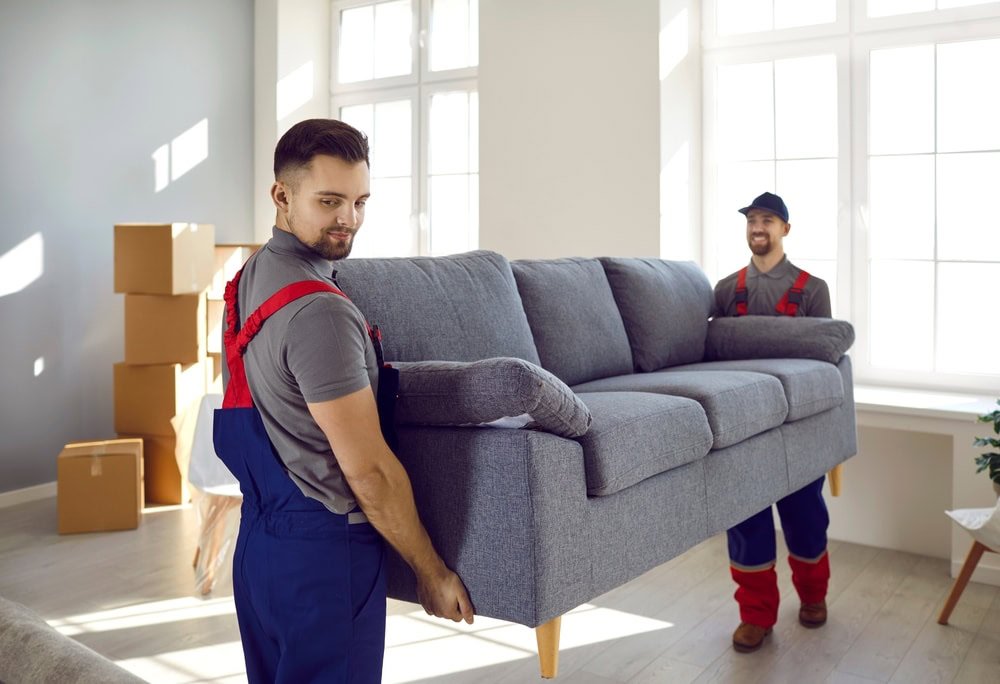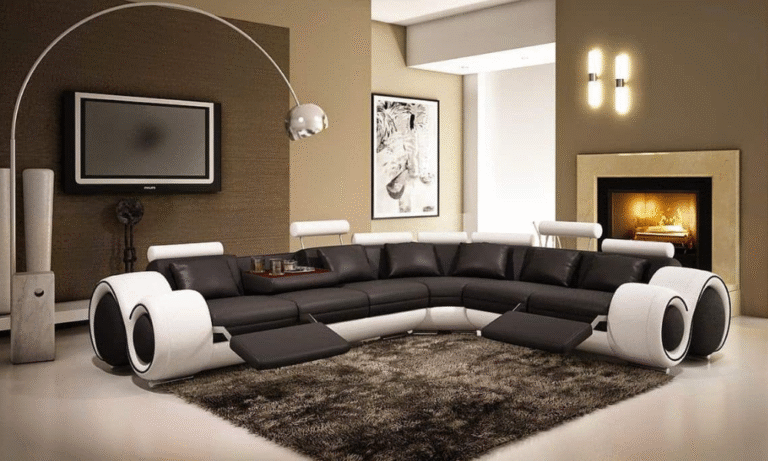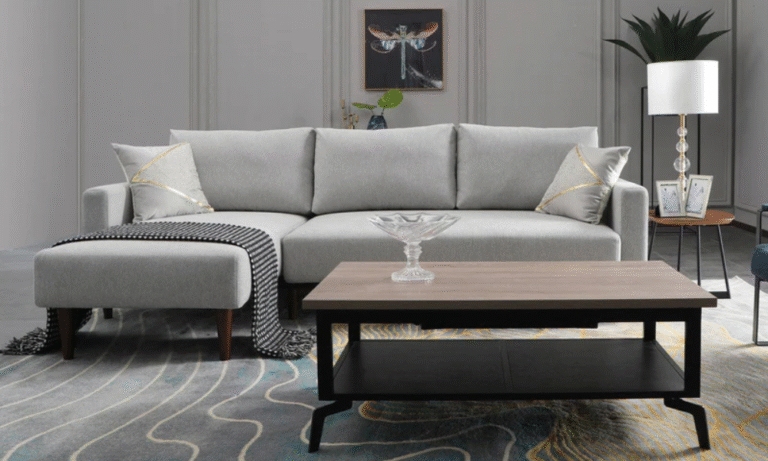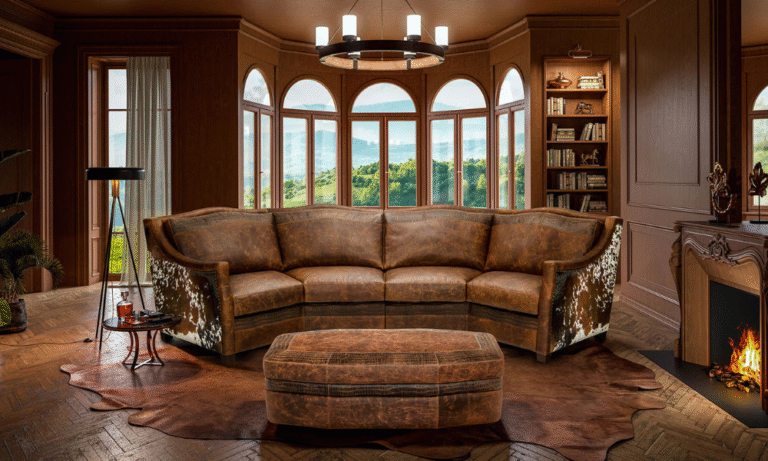Estimated reading time: 10 minutes
Last updated on August 23rd, 2025 at 01:36 am
Welcome to our detailed sofa installation instructions! Whether you’ve just purchased a new sofa or need to reinstall an old one, we’re here to assist you.
This blog will provide step-by-step instructions for arranging your sofa for a visually enticing and comfortable living space.
We will cover everything, from preparing the area to handling different varieties of sofas. Whether you’re a do-it-yourself enthusiast or a first-time homeowner, our installation strategies and techniques will ensure a smooth process.
Goodbye to the stress and confusion of sofa assembly, and hello to a stylish and precisely arranged seating area. Let’s plunge in and turn your sofa fantasies into reality!
Choosing the Perfect Sofa

Photo Credit: cotswoldgrey
In the pursuit of the ideal sofa, it is essential to achieve an equilibrium between form and function. It is essential to choose a sofa that complements your existing decor while also meeting your comfort and durability requirements. To aid you in this endeavor, consider the following factors during the selection process:
Style and Aesthetic Appeal
When searching for the ideal sofa, it is essential to consider the overall manner and aesthetic of your living space. Consider the existing interior design and select a sofa that will blend in with its surroundings.
Prioritize locating a sofa that corresponds with your desired aesthetic vision, regardless of whether you favor classic elegance, contemporary minimalism, or eclectic charm.
By ensuring that the sofa complements the overall design of your living space, you can create a visually enticing environment that reflects your personal sense of style.
Size and Proportions
When choosing a sofa, it is essential to evaluate the available space in your living room to ensure that the sofa’s dimensions and proportions are suitable. It is essential to strike the proper equilibrium, as the sofa should neither dominate the room nor appear dwarfed in comparison.
Start by measuring the dimensions of the intended sofa placement location. Consider the space’s length, width, and height, as well as any architectural features or obstacles that may affect the positioning of the sofa.
This evaluation will help you determine the maximum sofa size that will fit comfortably in the provided space.
Consider the number of individuals the sofa must accommodate. If you frequently host visitors or have a large household, a larger sofa or sectional sofa may be more appropriate.
If you have limited space or prefer a more intimate atmosphere, a smaller sofa or loveseat may be a preferable option.
Ensure the sofa has sufficient seating for everyone to rest comfortably. Consider seat depth, cushion firmness, and back support in order to ensure a comfortable and ergonomic seating experience.
Comfort and Ergonomics
Cushion Depth: Sit on the couch and measure the depth of the cushion. It should support your quadriceps adequately without causing discomfort or strain. Ideal seat depth allows you to comfortably sit with your feet level on the ground.
Cushion Firmness: Determine the cushion’s firmness. They should establish a balance between being sufficiently soft for comfort and sufficiently firm for correct posture. Sit on the cushions and evaluate how they feel to determine their quality.
Individual preferences for the firmness of a cushion can differ, so choose what feels most comfortable to you.
Back Support: Pay close attention to the sofa’s back support. It should provide adequate lumbar support to maintain correct posture and reduce discomfort. Ensure that the backrest supports your lower back by conforming to the natural curvature of your vertebrae.
Durability and Quality

Photo Credit: brittany
Frame Construction: Evaluate the sofa’s frame construction. Consider a structure made of hardwoods, such as oak or maple, or superior plywood. Avoid frames made from inferior materials, such as particleboard, as they are less durable and may deteriorate over time.
Joinery: Examine the sofa’s frame’s joinery. Look for reinforced corners, dowels, or metal brackets that add strength and stability. Strong joinery techniques, such as mortise and tenon or double-dowelled connections, increase the sofa’s overall durability.
Fabric for Upholstery: Evaluate the quality and durability of the fabric for upholstery. Consider its durability, pilling, and fading resistance. Consider fabrics that are stain-resistant and simple to clean, particularly if you have children or pets.
Attention must be paid to the cushion stuffing material. Cushions made of dense foam or stuffed with down are typically more resilient and retain their shape better over time. Cushions that rapidly lose their firmness or become flat can detract from the sofa’s overall comfort and durability.
Functionality and Versatility
Seating Capacity: Determine the optimal seating capacity for your needs. Consider the frequency with which you host guests and the size of your household. If you frequently host guests or have overnight guests, a sofa bed or sectional settee with a chaise lounge can provide additional seating and sleeping space.
Evaluate any additional features that increase the versatility of the settee. Reclining mechanisms, for instance, can provide additional comfort and relaxation, particularly if you enjoy lounging or watching movies. Within the sofa’s storage compartments, blankets, pillows, and other items can be precisely organized.
Consider modular or sectional sofas if you prefer a flexible living space. These allow the individual pieces to be rearranged to accommodate various seating arrangements or room layouts. This adaptability is especially advantageous if your interior design changes frequently or if you have limited space.
Consider how the sofa can accommodate a variety of interior design styles. Choose a sofa with a design that is adaptable to various interior styles, allowing you to update your home’s appearance without having to replace the sofa.
Measuring for the Right Fit
To avoid unpleasant circumstances during sofa installation, it is essential to take accurate measurements of your space. Here is a detailed guide to measuring for a proper fit:
Measure the Doorways: Determine the width and height of the doorways and corridors through which the sofa will pass. Ensure that the sofa’s dimensions will permit simple movement during installation.
Measure the Area: Measure the intended sofa placement area. Consider the size in terms of length, breadth, and height. To maintain a balanced layout, it is also essential to measure the distance between windows, entrances, and other furniture.
Think About the Orientation: Determine whether your settee will be placed against a wall, in the middle of the room, or in a corner. This will help you determine the optimal sofa dimensions and configuration.
Preparing the Room
Before installing a sofa, the room must be prepared to ensure a seamless and trouble-free installation. Here are some important measures to take:
Clear the Space: Remove any obstacles or pieces of furniture that could impede the installation. From the entrance to the designated location where the sofa will be placed, clear a path. This will allow for simple maneuverability and protect the sofa and other items in the room.
Consider using protective covers or blankets to shield your floors during the sofa installation procedure from any potential scratches or marks. This is particularly essential if your flooring is hardwood or delicate.
Assemble the Necessary Tools Before beginning sofa assembly, assemble all the necessary tools. Depending on the sofa’s design, this may consist of a screwdriver, wrench, or Allen key. Possessing the required equipment will save you time and ensure a seamless installation.
Assembling Your Sofa

Photo Credit: thespruce
After selecting the ideal sofa and preparing the room, it is time to assemble the sofa. To ensure a successful installation, adhere to the following steps:
Consult the Directions: Read the manufacturer’s instructions for your sofa with care. Familiarize yourself with the assembly procedure as well as any specific instructions or precautions listed.
Sort and arrange: Lay out all of the sofa’s components and arrange them according to the instructions. This will facilitate the identification and location of necessary components during assembly.
Follow the Sequence: Assemble your sofa according to the instructions suggested sequence. Begin by assembling the frame, followed by the armrests, backrests, and cushions. Take your time and ensure that each component is properly secured.
Double-Check the Connections: After assembling the settee, double-check all connections and fasteners. Ensure that nothing is loose or unstable and that everything is securely fastened. This will guarantee the durability and safety of your sofa.
Positioning and Placement
Now that your settee has been assembled, it is time to position and place it in the location of your choosing. Consider the following positioning suggestions:
Think About the Room Layout: Determine the optimal placement for your sofa based on your room’s layout. Consider elements like natural illumination, focal points, and traffic flow. Place the sofa in a manner that enhances the space’s functionality and aesthetic allure.
Create a Focal Point: Position the settee so that it becomes the room’s focal point. This could face a fireplace, a television, or a breathtaking view. By placing the settee as the room’s focal point, you can create a visually appealing and inviting environment.
Ensure that the placement of the sofa maintains a sense of equilibrium in the room. Consider the scale and proportions of other furniture elements and the space as a whole. Aim for an arrangement that is harmonious and facilitates movement and conversation.
Adding the Finishing Touches

Photo Credit: leathergallery
Consider adding the finishing details to complete the installation of your sofa and make your living area truly inviting. Here are some suggestions for enhancing the design and comfort of your sofa:
Add decorative pillows and throws to your sofa to infuse it with character and coziness. Choose hues, patterns, and textures that complement the room’s overall motif. These accessories not only add visual appeal but also increase comfort.
Place side tables and lamps adjacent to your settee to create a functional and well-lit seating area. This will facilitate the placement of beverages, literature, and remote controls. Choose tables that complement the design of your sofa for a unified appearance.
Accent Pieces: To enhance the ambiance of your living space, consider incorporating accent pieces such as artwork, rugs, and plants. These elements can blend the room together and give your sofa installation a personal touch.
Choose pieces that complement the style and color scheme of your sofa in order to create a harmonious and inviting environment.
Use decorative items such as wall art, decorative mirrors, and shelving to personalize the area surrounding your sofa. Create a warm and inviting environment by displaying family photographs, artwork, and cherished mementos that reflect your individuality.
Optimize illumination: Focus on the room’s illumination to create a warm and inviting atmosphere. Use a combination of ambient, task, and accent illumination to improve the area surrounding your sofa.
Consider installing dimmers or utilizing lamps to produce a range of lighting intensities to accommodate various moods.
FAQs on Common Sofa Installation
Bottom Line
You have effectively acquired knowledge of sofa installation. You are well-equipped to create a cozy and inviting seating area in your home, from selecting the ideal sofa to assembling it with precision, to ultimately adding your own personal touches.
Remember to consider size, design, and comfort when selecting a sofa, and always install it according to the manufacturer’s instructions.
By adhering to the advice and instructions in this article, you can ensure a seamless and pleasurable sofa installation. Therefore, purchase the sofa of your dreams and appreciate lounging in comfort and elegance!



